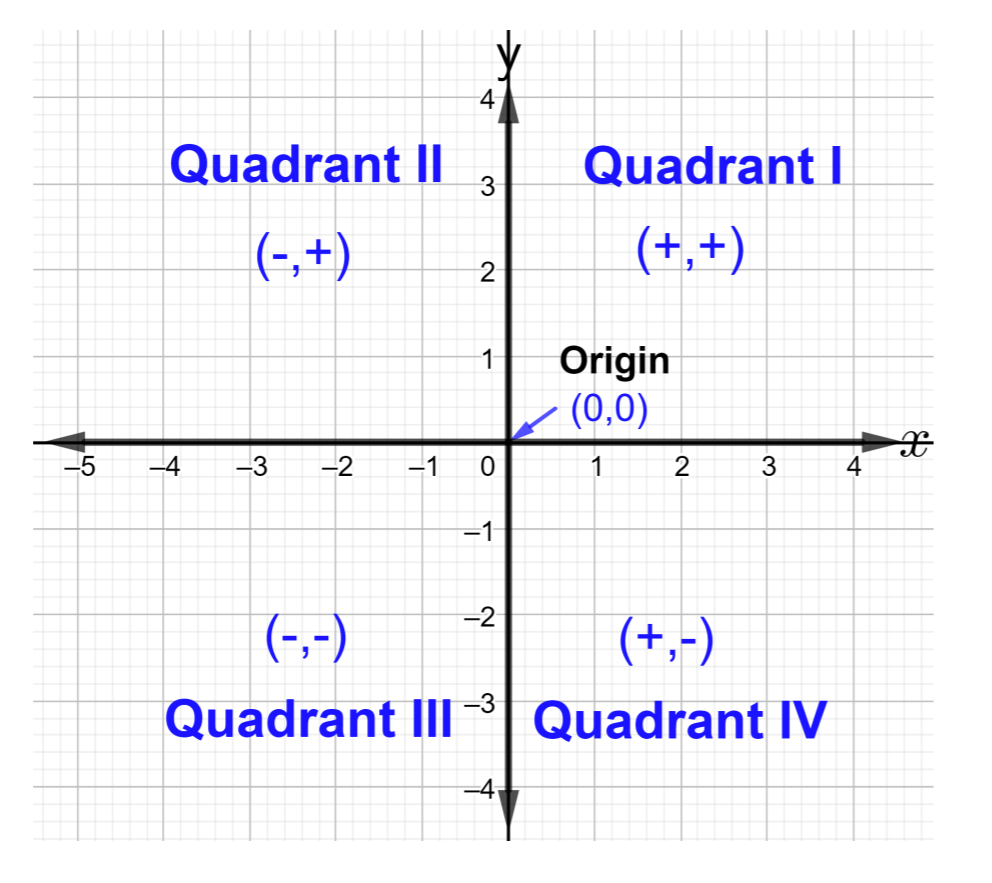2.1: Cuadrantes de definición y etiqueta
- Page ID
- 112519
El Sistema de Coordenadas Rectangulares también se conoce como Sistema de Coordenadas Cartesianas, se basa en una cuadrícula y está formado por dos líneas numéricas perpendiculares, la línea numérica horizontal llamada eje x y la recta numérica vertical llamada eje y. Cada punto del sistema de coordenadas rectangulares se puede identificar mediante coordenadas x e y únicas.
Las dos líneas numéricas perpendiculares se cruzan en el punto\((0, 0)\) y se llama origen. El sistema de coordenadas rectangulares se divide en cuatro regiones. Las regiones se denominan cuadrantes y se etiquetan en números romanos de la siguiente manera: Cuadrante I, Cuadrante II, Cuadrante III y Cuadrante IV, como se muestra en la siguiente figura

Cada punto en el plano de coordenadas corresponde a un par ordenado único\((x, y)\), donde\(x\) y\(y\) son los números reales. El par ordenado siempre tiene la coordenada x primero (a la izquierda) y la\(y\) coordenada -segundo (a la derecha). \((6, 4)\),\(\left(−.33, \dfrac{1}{5} \right)\),\((100, −2)\),\(\left( \sqrt{ 3}, \dfrac{1 }{2}\right )\) son pocos ejemplos de pares ordenados. Lee el par ordenado\((6, 4)\) como” el punto seis, cuatro” donde 6 es la\(x\) coordenada y 4 es la\(y\) coordenada.
- ¿Cuáles son los puntos llamados que son de la forma\((x, y)\)?
- Identificar las coordenadas de los siguientes pares ordenados:\((−10, 0)\),\((0.5, −6)\),\(\left(\dfrac{1}{ 2} , −\dfrac{ 5 }{3} \right)\)
- Nombre y estado el par ordenado del punto donde se cruzan los ejes perpendiculares del sistema de coordenadas rectangulares.
- Indique las 4 regiones en el sistema de coordenadas rectangulares.
- Nombra la primera coordenada en un par ordenado.
- Nombra la segunda coordenada en un par ordenado.
- ¿Cuál es la recta numérica horizontal en el sistema de coordenadas rectangulares?
- ¿Cuál es la recta numérica vertical en el sistema de coordenadas rectangulares?


